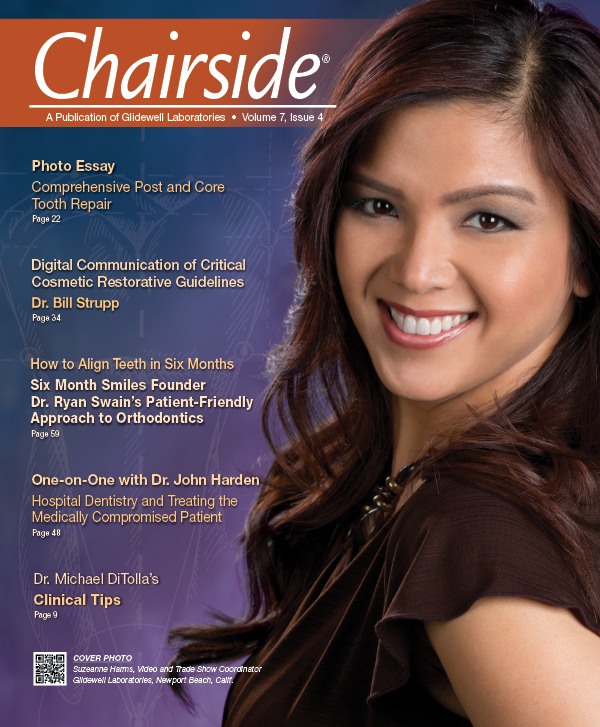Editor's Letter
One of the reasons why I love Dr. Bill Strupp is his attention to detail when it comes to dentistry. Some might even call it obsessive. If you have been to his courses or subscribe to his newsletter “Crown & Bridge UPDATE,” you will know what I am talking about. This attention to detail allows Bill to tackle large cases that might otherwise be less predictable. I prefer to help dentists focus on the basic stuff — 1 or 2 units of crown & bridge with a 4% remake rate and that fall into place the other 96% of the time. So when it comes to teaching the big cases, I leave that to Bill because that’s where his attention to detail can help avoid some huge snafus. In this issue of Chairside®, he shares with us how he goes about communicating the horizontal plane of the case to the lab and the other specialists who may be involved.
I used to do a lot of traditional orthodontics on kids and adolescents, with a few difficult adults thrown in the mix. And it was too bad, because the adults really did want to have straighter teeth, but many were not willing to go through two years of traditional ortho. I found clear plastic aligner trays to be frustrating because once you have moved a tooth with an archwire and a bracket, moving a tooth with an aligner seemed more like wrestling a greased pig. Dr. Ryan Swain has managed to merge moving teeth using traditional bonded brackets with an accelerated six-month time frame that is much more acceptable to most adults. His article may make you think twice before treating every arch with alignment issues strictly as a veneer case.
Also in this issue, Dr. John Harden shares with us the unpredictability of doing dentistry in the OR. I think showing up to work and having no idea what procedure I will be doing might drive me crazy, but John thrives on it! Dr. Michael Miller has also once again generously let me delve into REALITY Publishing’s “The Techniques,” a book that I think should be given to all graduating dental students. Dr. Elliot Mechanic contributes an article on zirconia-based porcelain veneers that you will want to read as well.
Finally, as we continue to improve the translucency and esthetics of BruxZir® restorations here at the lab, it is our hope that one day soon I will have a BruxZir veneer case to share with you. Keep an eye out for this in a future issue.

Yours in quality dentistry,

Dr. Michael C. DiTolla
Editor-in-Chief, Clinical Editor


